Valuing Touch and Dancing Touch
In my last article , I explained that a “Form of Touch” is a quality of contact that activates functions that span both body and mind. Each Form of Touch is really an attitude which is transmitted through the quality of physical touch and also flavours the whole relationship between therapist and client. In my view this inner attitude is more important than the techniques or meridians used. It can happen that practitioners work with a meridian but undermine the Qi of the meridian through their attitude.
The energy functions to which each form of touch relates are often called the Six Divisions of Yin and Yang. Whereas the pairing of meridians in the Five Elements show a Yin-Yang, complementary relationship between two Zang-Fu Organ functions, the Six Divisions pair a leg meridian with a synergistic meridian in the arm. These pairings are both Yang or both Yin and show how the two Organs work together as part of a deeper function.
Traditional Chinese Medicine doesn’t define these deeper functions. However, my research in the 1980’s into child development showed clearly that it was the pathways of these Divisions that guided infant movement development and, at a biological and social level, facilitated the formation of the self.
The Inner Community
Physiologists, neuroscientists and psychologists no longer view our self as a single entity governed by a central controller. Instead there is convincing evidence that both body and mind are made up of a community of autonomous parts, all competing and collaborating with each other . It is from this complex network of mutual communication that a single sense of self emerges.
This viewpoint makes a vital difference to medicine, whether orthodox or alternative. Over 80% of orthodox medicine is palliative or surgical, meaning that it is simply getting rid of the symptoms caused by a part of the body that isn’t working. Much of alternative medicine is based on various models of organic harmony with their own diagnostic and treatment protocols. Energetically, these systems are aiming to control the system; to bring it into a ‘correct’ state. However, if one takes the ‘community view’ of the body seriously, then much of medicine is not taking the group dynamics of the body into account and thus the treatments do not last.
To give a simple example, in many forms of Shiatsu, the (simplistic) idea is to find a Kyo-Jitsu pair of meridians that relate to each other, to support and nourish the Kyo and to disperse the Jitsu. However, if the condition is chronic, then the Jitsu energy has been working hard for years, and resents being ‘dispersed’ just as a person in a group who has been organizing the teas for years can resent being told to stop because other people are now willing to do the job. The Jitsu-person needs to be valued by the rest of the group for the work he has been doing before he can let go.
There is now a large body of research into what makes groups of people work well together . These insights can be transferred directly into a bodywork session and we can use group facilitation principles to help the inner community to work well together. We will show how four meridians, which form two Divisions, are responsible for helping the inner community to follow these “group principles”. The Forms of Touch related to these divisions demonstrate how to activate them through bodywork and through your attitude.
Liver – Group Purpose
Groups usually need a purpose to stay together. If this ‘group purpose’ is not clear the group tends to fragment. In the first part of adulthood our sense of purpose seems to focus on attracting partners, children, jobs, creativity and status. One of the issues of getting older is that many of these earlier purposes cease to be relevant, which can lead to the breakup of the Inner Community and serious health problems. The Liver that provides a central purpose for the internal community to collaborate around and its flexibility is important to redefine our purpose at different stages of life.
Pericardium – Networking
However, having a central purpose is not enough to form a community. For a truly collaborative group to form, every part of the body-mind needs to connect and communicate with every other part. This network of connectivity is represented by the Pericardium function. In Chinese the Pericardium is called the Xin Bao, or the Heart Fascia.
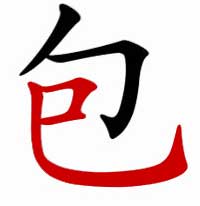
But Bao means more than fascia; the character pictures a womb (the red bit is an embryo); so the fascia is seen as more than just connective tissue, it also embraces and nurtures every member of the inner community. Fascia gives the physical foundation for the interconnections within the community. It is this feeling of supportive connectedness within the internal community that the Pericardium facilitates.
The Jue Yin and Valuing Touch
The Liver and Pericardium together form the Jue Yin Division. The Pericardium embraces each member and gives them a sense of connectedness. The Liver is more active, holding everything together, and is thus more embodied in muscle. However, a group that is working well and communicating with each other does not need to be forced together. In such a group the Liver embraces the whole, valuing every part and providing a central purpose to gather round. It’s only when a group is fractured that the Liver needs to resort to control to hold things together.
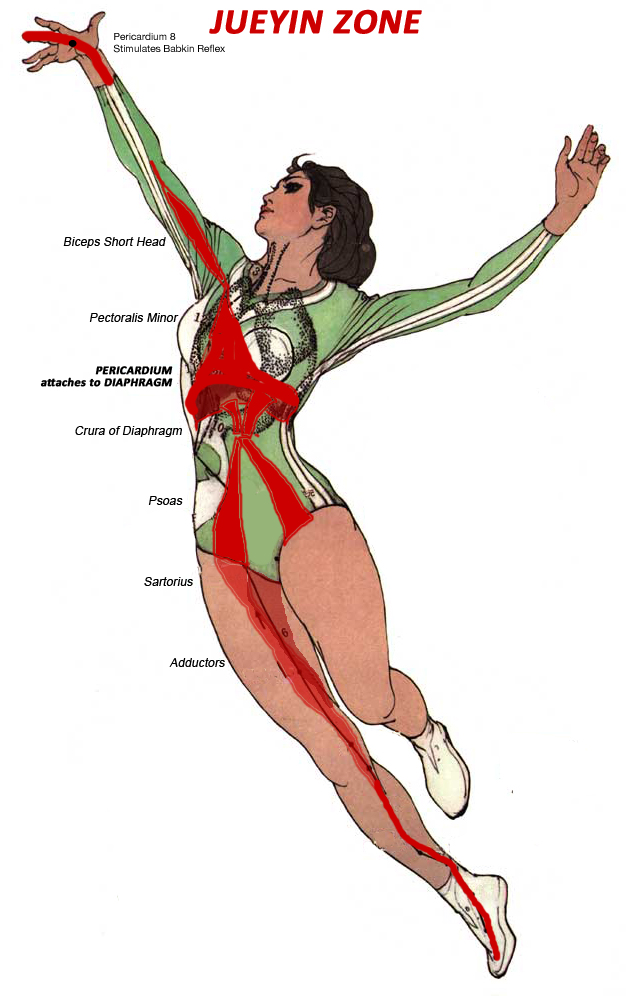
People often come to Shiatsu because they want to make a change; to fix a problematic part of themselves. But to help a group to function, one has to start by valuing each member for what they are already doing, not what they could do if they changed. For example, a chronically tense muscle is painful and it is natural to want it to change and let go. But the purpose of chronic tension is often to protect. This can be useful in the healing of trauma even if the end result is dysfunctional. So the tension can be appreciated for its role in the inner community. Valuing a habit for the job it’s been doing can produce a profound transformation. I often murmer “Well done!” under my breath when contacting such an issue. This attitude encourages each part of the self to feel a valuable part of the team and paradoxically helps it to change.
Each form of touch consists of an attitude and a physical technique. The Form of Touch associated with the Jue Yin is called “Valuing Touch” , whose attitude is embracing and valuing what is already happening rather than trying to change things. The physical aspect involves helping the client to choose to do what she is already (unconsciously) doing. For instance, instead of trying to release a chronically tense muscle, one can show the client how to consciously condense the fibres in the muscle. By doing this she can own and value the job the muscle is already doing and she can frequently find another way of doing that job so that the muscle can be released from its bondage.
This is fundamentally different to the Sotai techniques of contract-and-release because the latter is just another technique for releasing the muscle rather than valuing what it is doing. Chronically tense muscles are not fooled by Sotai because they know that they are doing a necessary job, even if it is not the most harmonious way of doing it!
The Shao Yang and Dancing Touch
The complementary Division to the Jue Yin is the Shao Yang, consisting of the Gall Bladder and the Triple Heater. Whereas the Jue Yin focuses on giving a feeling of connectedness, these Yang functions are concerned with how the internal community acts together and resolves conflict between its members.
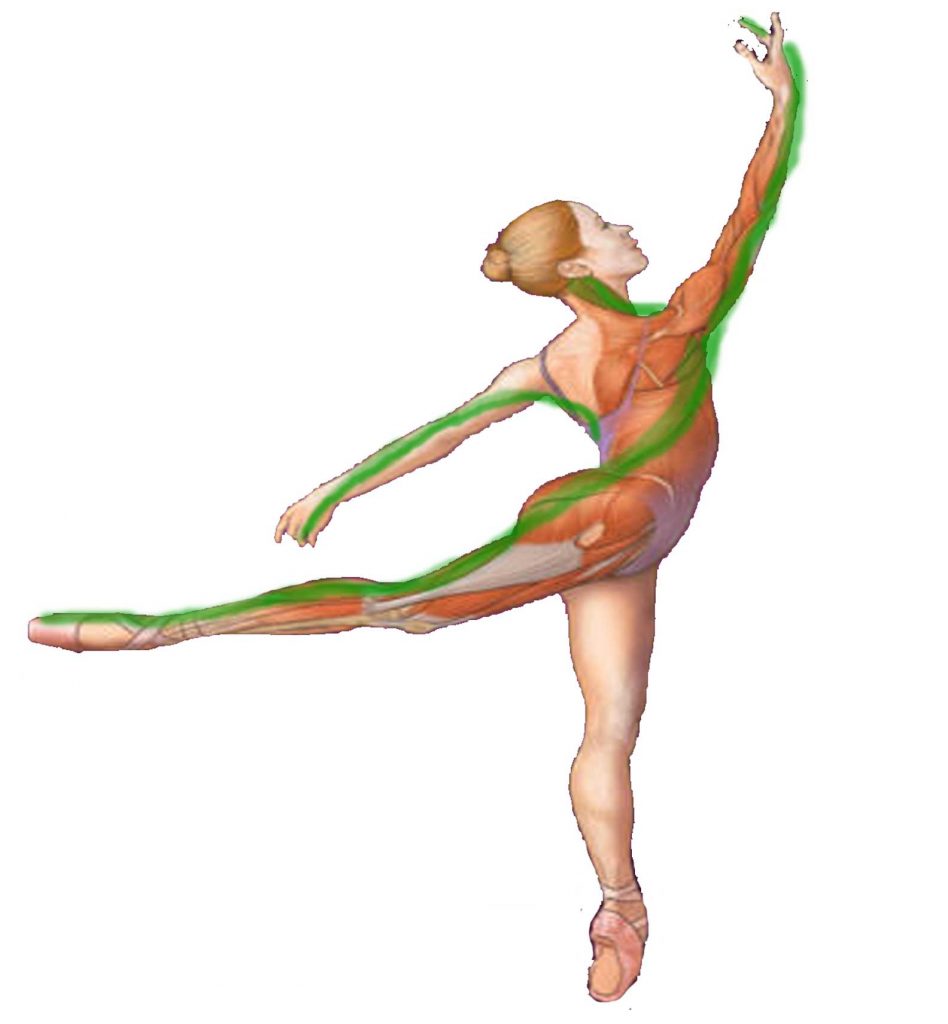
There are essentially two distinct forms of conflict. One could be called the Shoot Out, where two forces are acting in what seems to them to be opposite directions. The only solution that the combatants see is that one or the other wins and beats the loser.

The other is the “Cop Out” where two people who are in relationship don’t make contact, creating a tension between them because they are also needing to work together.
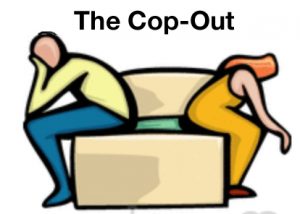
In a group, if one person is Copping Out, then it often diverts the energy of the group into trying to pull the cop-out back into the team. This is a very common form of conflict in the body where one part is not doing its job.
.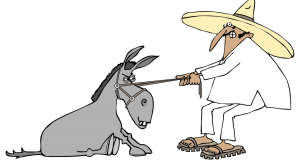
Conflict resolution depends on finding a common activity within which both forces can feel equally valued. This could be called The Magic Roundabout.
The Triple Heater focuses on helping every part of the internal community to be involved. The Gall Bladder function focuses on helping potentially conflicting members to use their differences in collaboration.
For example, to provide strength, it is common for one side of a joint to be braced while the other moves. But this causes conflict in the joint – just as if one partner in a dance holds still while the other tries to move. If this pattern remains even when strength is not needed then the continual conflict can wear the joint down. If one can teach the braced bone to join the dance the conflict can be turned into harmonious and graceful movement. Because of this metaphor, the Form of Touch associated with the Shao Yang is called “Dancing Touch” and this joint work is a physical example.
The same principles can be applied to any form of conflict in a person’s life. If they are feeling pulled in opposite directions then Dancing Touch listens to both sides of the conflict and explores how they are connected. Often a common direction emerges that respects both energies and allows both to act together.
The Integrating Family
The Jue Yin and the Shao Yang work together as a family of four meridians to Integrate the Inner Community. Together they also join the Wood and the Ministerial Fire Elements, which are both concerned with relationship. Working with Valuing Touch and Dancing Touch aims to heal the dysfunctional dynamics within the community and then the group can reconfigure to deal with its challenges with good heart. This is particularly relevant for old age, disability and chronic conditions. In these cases we are not necessarily trying to heal the condition but to help the person-community to embrace it and deal with it in the best way they can. The important principle in working with this family is not to aim for change but to value what is there and help it to explore its potential.
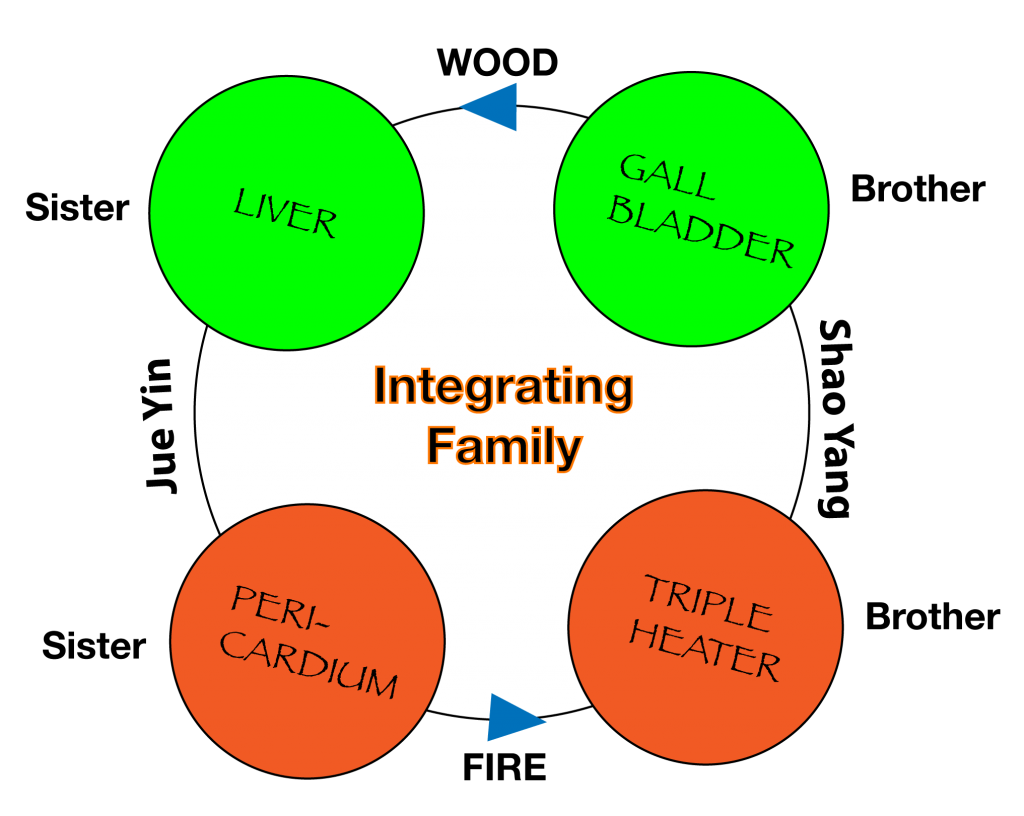
Case History
One client taught me a lot about these forms of touch. Sally came to me with period pains and migraines but immediately I started working with her, she tensed up, blocking the touch. When we noticed this reaction she remembered that she had a dreadful skin disease as a little girl, because of which she couldn’t be touched for a year. So she was in conflict, she wanted to be touched but the traumatic memory blocked it when it was offered.
My first response was to value the blocking. It had been doing a good job protecting her from the pain of that trauma and we spent a session feeling the contraction and saying “Well Done!” to it. Next, I suggested that, when she felt the first signs of the contraction she told me to stop and actively pushed me away. Through this activity she was exploring an expansive and conscious way to protect herself instead of the unconscious contraction.
It took several sessions for her to find the confidence to really open to touch, knowing she could push me away at any time. Eventually she found a way of meeting her need for contact and trusting in her boundaries that transformed the chronic Kyo-Jitsu dynamic: she could open herself to receive what she needed knowing that she could always push away what she couldn’t cope with .
Thus the original conflict was resolved by finding the common ground between Invitation and Protection. Both energies became aspects of Expansion. She could let go of Contraction as a way of protection. Almost irrelevantly, the physical symptoms she had come with also disappeared.
1 Bill Palmer, The Six Forms of Touch, Shiatsu Society Journal Autumn 2018
2 Bill Palmer, Development of the Yang Ming and Tai Yin in infants. JSOBT 1995
3 Daniel Dennett, Consciousness Explained
4 Dale Hunter, The Art of Facilitation
5 Dragon Dreaming: www.dragondreaming.org
6 Eight Shields: 8shields.org
7 For more about this case history see www.seed.org/sally

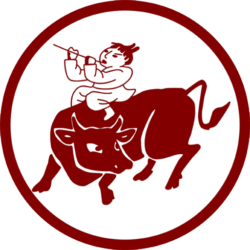
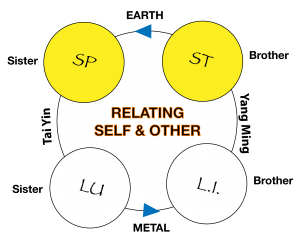
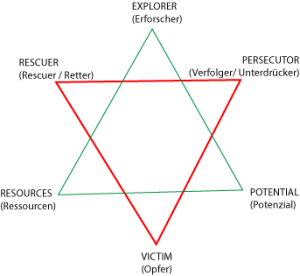
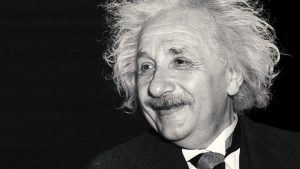 I have also said that according to Einstein, this is the reality- that the force of gravity is in some way an illusion and that what we really perceive is the way in which the floor stops us from moving down.
I have also said that according to Einstein, this is the reality- that the force of gravity is in some way an illusion and that what we really perceive is the way in which the floor stops us from moving down.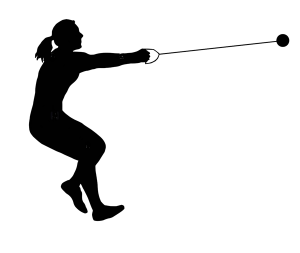 A very good analogy is swinging a ball on a chain:
A very good analogy is swinging a ball on a chain: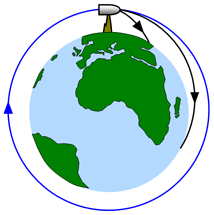 Newton’s cannonball
Newton’s cannonball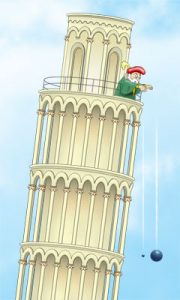 Galileo and the Tower of Pisa
Galileo and the Tower of Pisa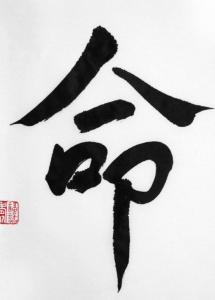 Taking the character for Ming to bits: the top two strokes represent a person. Then there is a single line – representing unity – and with a subtle connotation of unifying past and present, ancestors and oneself. Then two shapes. The left shape is a mouth and the right is an embryo.
Taking the character for Ming to bits: the top two strokes represent a person. Then there is a single line – representing unity – and with a subtle connotation of unifying past and present, ancestors and oneself. Then two shapes. The left shape is a mouth and the right is an embryo.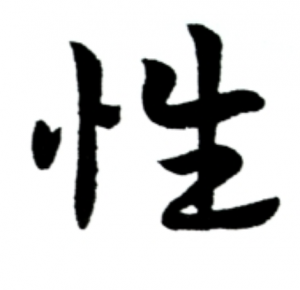 The second character Xing consists of two parts. The left is a heart, the right is life. So it means Heart-Life. It is normally translated as one’s nature.
The second character Xing consists of two parts. The left is a heart, the right is life. So it means Heart-Life. It is normally translated as one’s nature.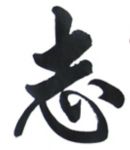 The Zhi
The Zhi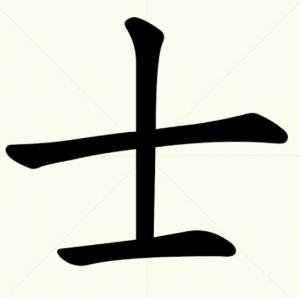
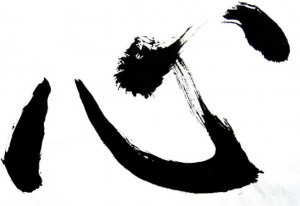 The bottom part is Xin, literally the Heart, but in Chinese it also connotes any aspect of Mind or Awareness. So together Zhi has the connotation of the Creative Mind. The aspect of ourselves that goes into new territory, doesn’t follow the herd but follows one’s authentic spirit.
The bottom part is Xin, literally the Heart, but in Chinese it also connotes any aspect of Mind or Awareness. So together Zhi has the connotation of the Creative Mind. The aspect of ourselves that goes into new territory, doesn’t follow the herd but follows one’s authentic spirit.